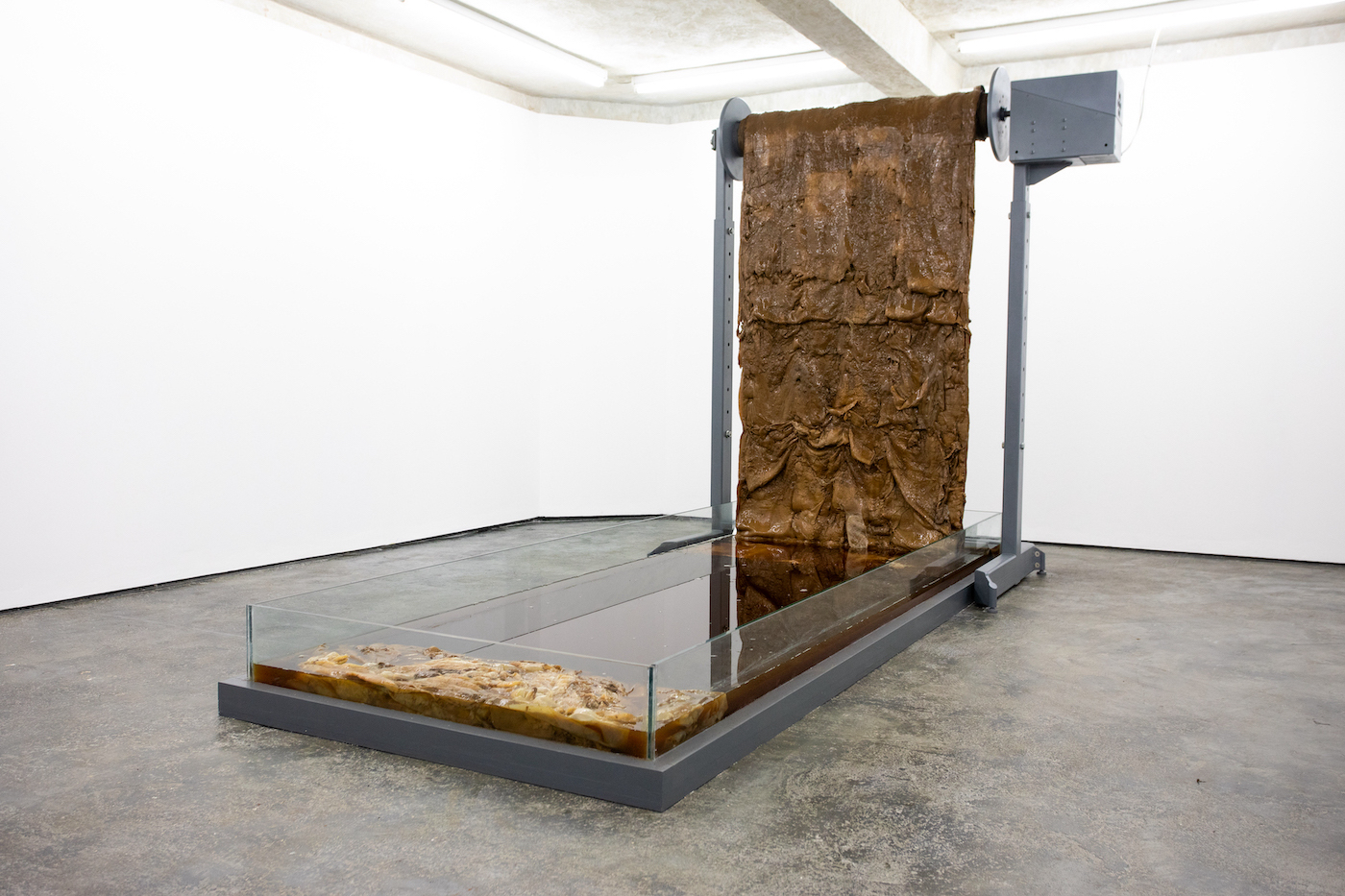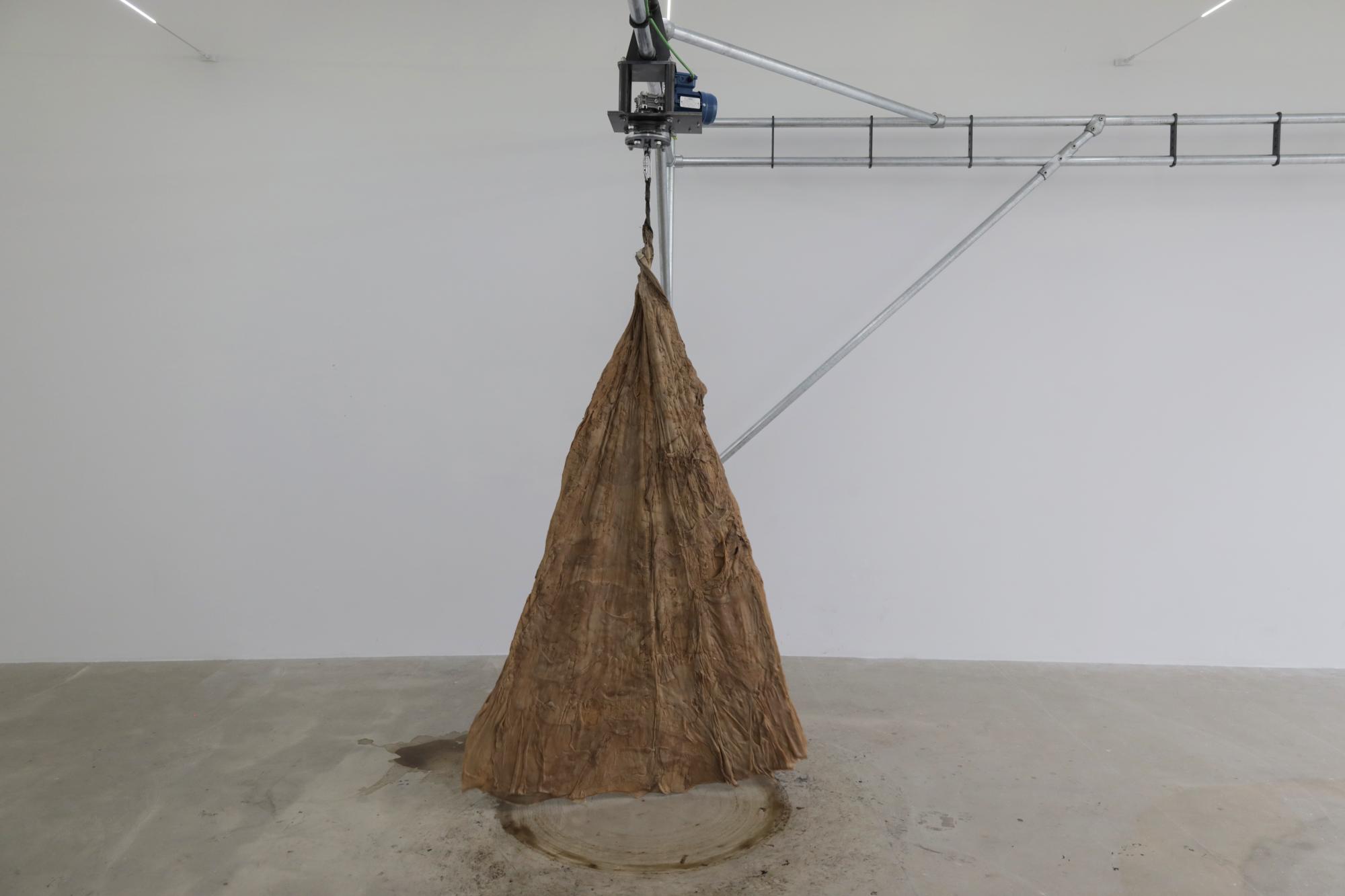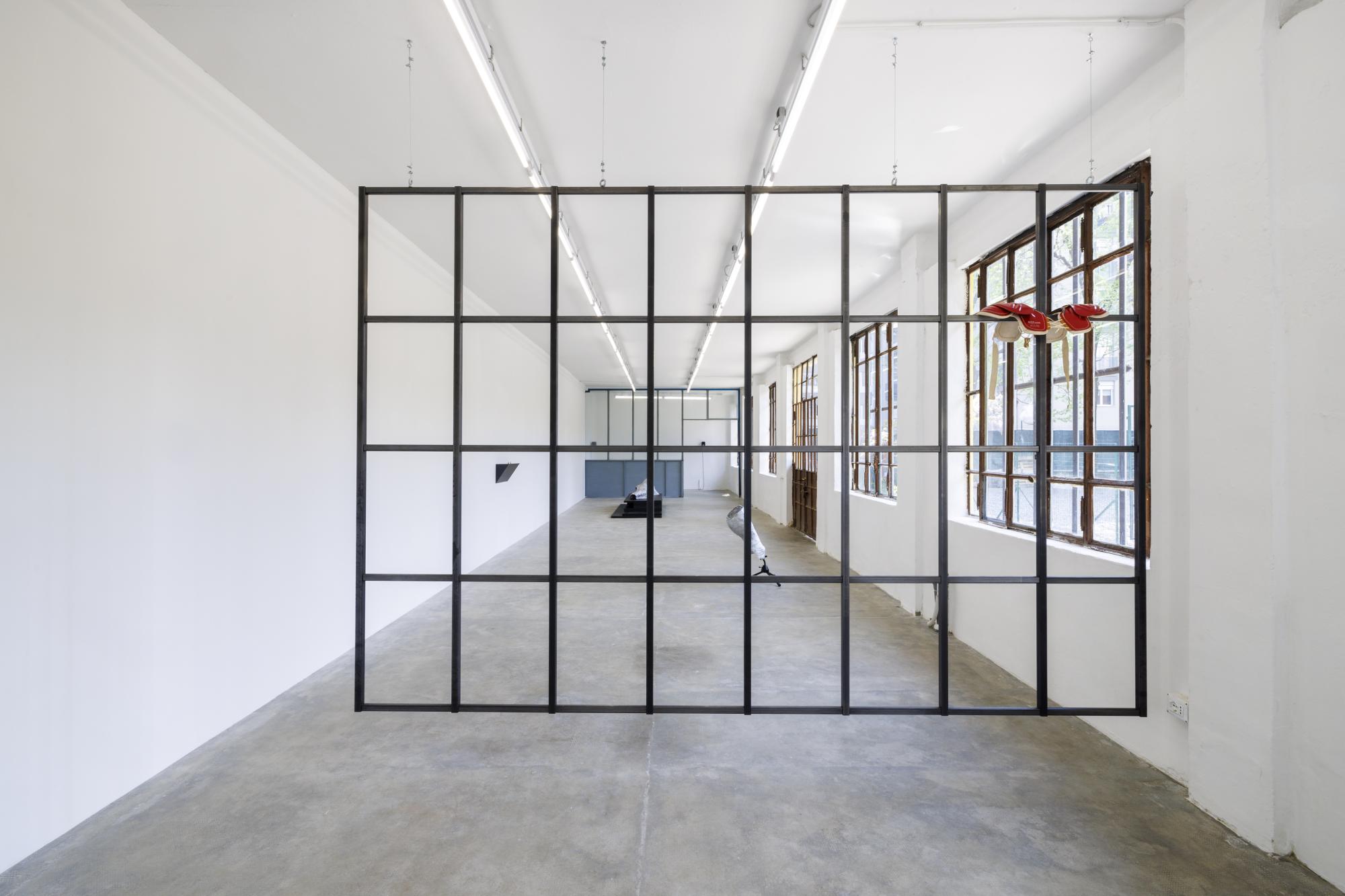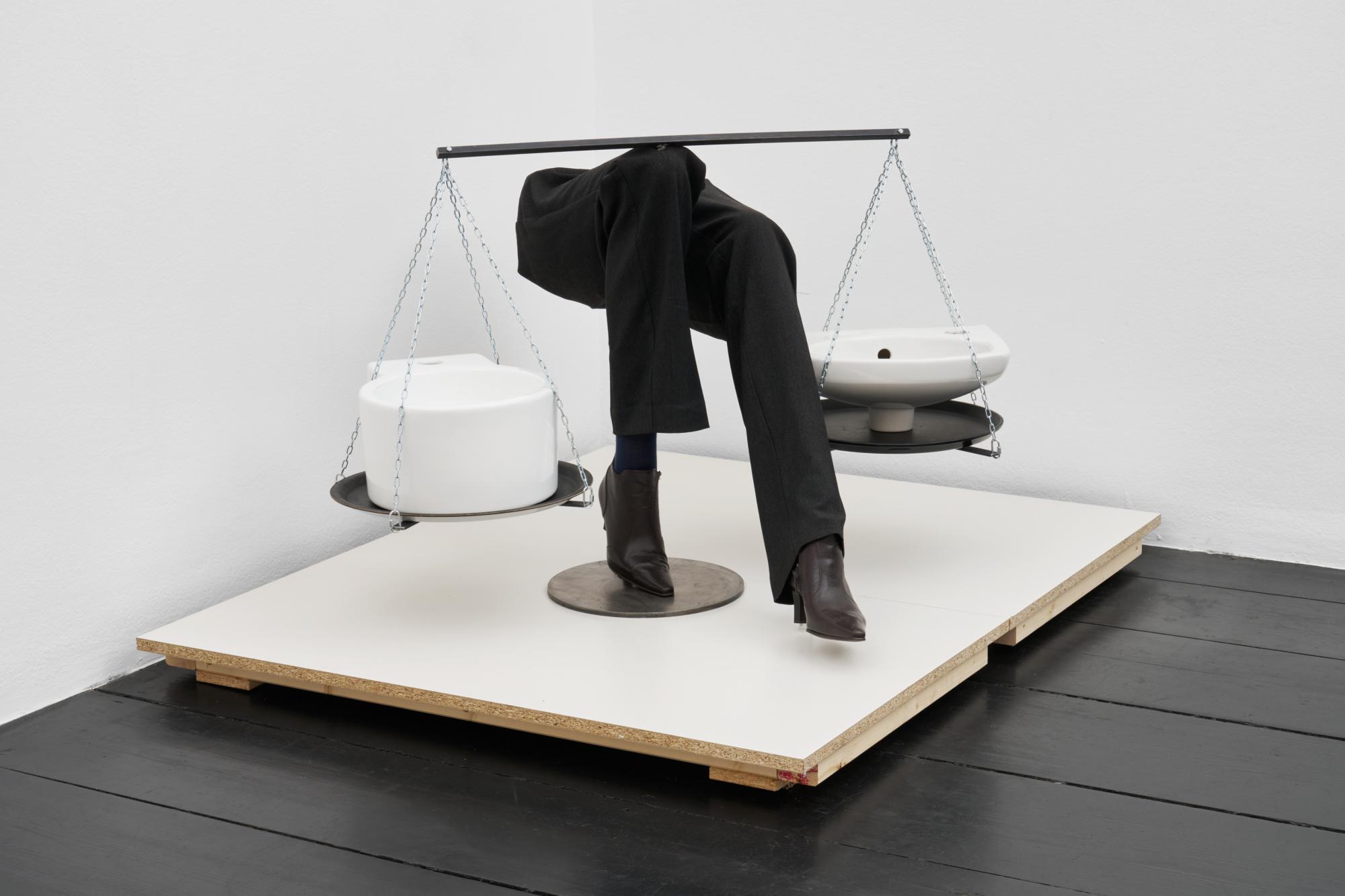
 Zurück
Zurück
GIANNI MANHATTAN
curated by Bianca Stoppani


Bianca Stoppani is an art researcher who does writing and curatorial work around deviant beings and emancipatory politics. Their writings have appeared in artists’s catalogues, art magazines, and newspapers. They have organised reading groups as well as given talks at art institutions, artist-run spaces, and universities. In their role of curator for the editorial and discursive projects at Fondazione In Between Art Film, they co-edited the exhibition catalogues Nebula (Marsilio Arte, 2024), Ali Cherri: Dreams of a Dreamless Night (Lenz, 2024) and Penumbra (Mousse, 2022); as well as curated the exhibition public programmes Thick Atmospheres (Teatrino di Palazzo Grassi, Venice, 2024) and Vanishing Points (Complesso dell’Ospedaletto, Venice, 2022).


Bianca Hlywa's (b. 1992, Canada) interdisciplinary practice emerges from an analysis of a cultural infrastructure defined by polarities inherited from modernity: between life/non-life, good/bad, and artificial/natural. Her work seeks to make visible the ways in which these notions have shaped the norms of contemporary politics and aesthetics. This is often done by challenging them using a visceral and curious materiality: oftentimes, SCOBY (Symbiotic Cultures Of Bacterial Yeast), grown to enormous proportions.


Morag Keil is living and working in London. Solo exhibitions include Artificial Intelligence, Isabella Bortolozzi, Berlin (2024), Needs & Wants, Jennys, New York (2023); A Life Less Ordinary (Sh*ll*w Gr*v*), Ivory Tars, Glasgow, Scotland (2021); L.I.B.E.R.T.Y, Project Native Informant, London (2014); Would you eat your friends?, Real Fine Arts, New York (2014); Potpourri, Cubitt, London (2013) and group exhibitions such as Art and Alienation at Kunsthalle Friart Fribourg (2025) and Lifes at Hammer Museum LA (2022).


Margherita Raso (b. 1991, IT) lives and works in Basel, Switzerland. Her recent solo exhibitions include Yet to Be Read or Seen, 18, Murata, Tokyo, JP, 2025; the hearing eye and the speaking ear, Fanta-MLN, Milan, IT, 2024; In dem Schloss, Milieu, Bern, CH, 2023; Vizio di Forma, Magazzino Italian Art, New York, US, 2022; Casting The Tempo, with music by Kali Malone, Santa Maria in Lucedio Abbey, Vercelli, IT, 2021; Canal, Bible, New York, US, 2018; and Piercing, Fanta-MLN, Milan, IT, 2017. Her works have been exhibited at Kunsthalle Basel (CH), Kunsthaus Baselland (CH), Kaufmann Repetto (New York, USA), Fondazione Arnaldo Pomodoro (Milan, IT), MACRO (Rome, IT), Fanta-MLN (Milan, IT), WPN-NYC (New York, USA), WallRiss (Freiburg, CH), MAMbo (Bologna, IT), Armada (Milan, IT) and Komplot (Brussels, BE), among others.
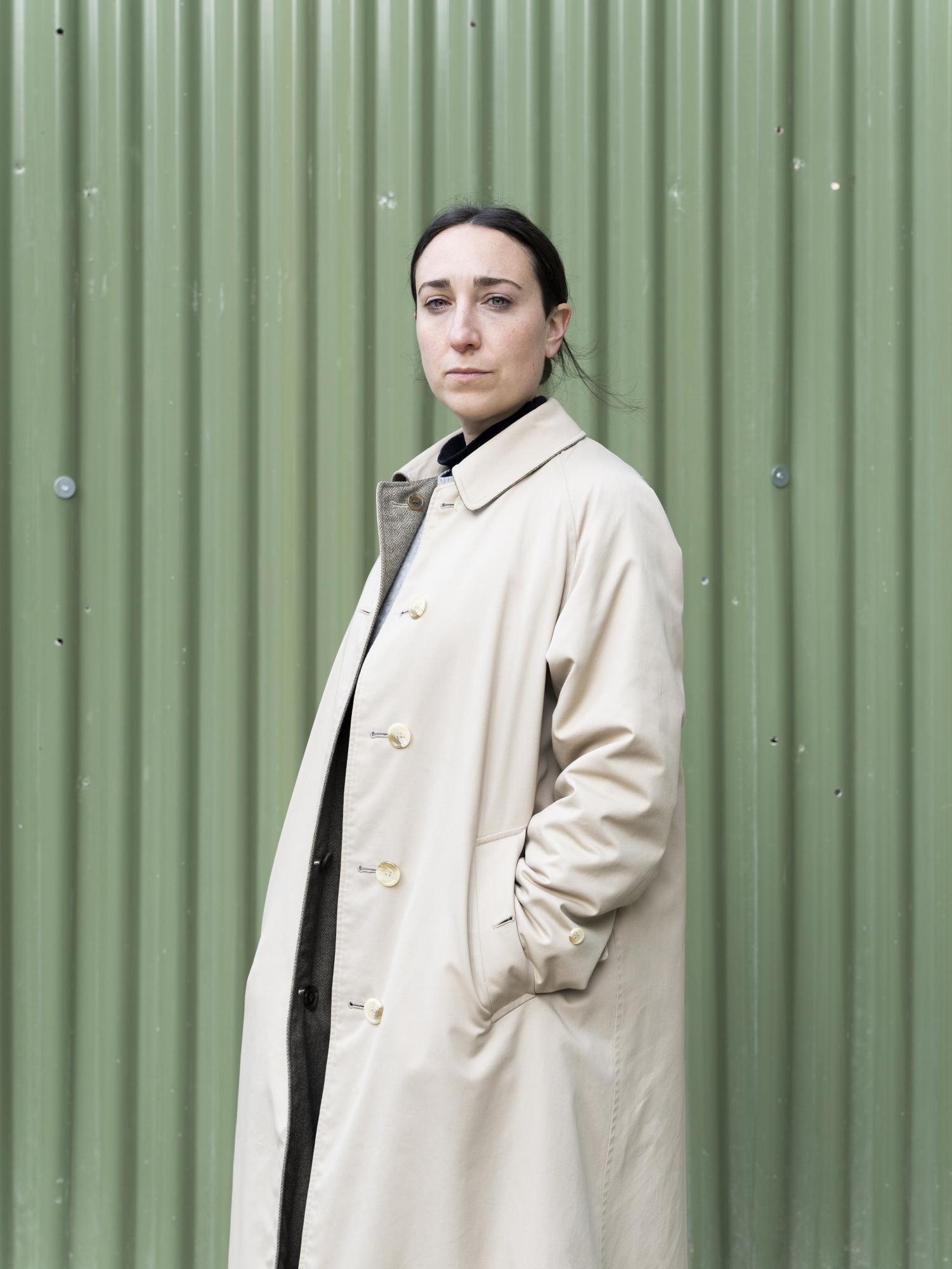
The Invisible Hand
Von dem Wenigen, woran ich mich aus meinen Schuljahren erinnere, gibt es die Erinnerung an jenen Morgen, als mein damaliger Philosophielehrer –– der dazu neigte, beim Dozieren mit seinen großen Händen die Luft um sich herum zu zerteilen –– über Adam Smiths Auffassung von Ökonomie sprach. Diese besagt, dass die Entscheidungen, die Individuen in der Konkurrenzsituation des sogenannten freien Marktes treffen, unbeabsichtigt, aber sicher der gesamten Gemeinschaft zugutekommen würden. Smith verglich diese unbewusste Intentionalität mit einer „unsichtbaren Hand“.
Dieses kraftvolle Bild verfolgt mich seither; und doch erfuhr ich erst Jahre später, wie jene Figur nach ihrem ersten Auftreten im 18. Jahrhundert vielfach herangezogen wurde, um metaphorische wie materielle Formen der westeuropäischen suprematistischen Agenda zu beschreiben und zu rechtfertigen. Ich begriff, dass es sich dabei nicht um ein Naturereignis oder eine automatisierte Dynamik handelt, sondern um eine „adaptive Wahrheit-für“, wie Sylvia Wynter es nennen würde: ein kulturelles und klassenbasiertes Konstrukt, das die Kommodifizierung (wenn nicht gar die Vereinnahmung) dessen legitimiert, was innerhalb unseres verfallenden weißen, männlichen, kolonialen, kapitalistischen Realismus als „Anderes“ gilt.[1]
Vielleicht liegt das, was mich an den künstlerischen Praktiken von Bianca Hlywa, Morag Keil und Margherita Raso anzieht, tatsächlich in diesem Verfolgtsein: ihrem Umgang mit Formen jener ersten „unsichtbaren Hand“. Das heißt, dass diese Werke – neben anderem – Fragen nach den Weisen des Sehens und deren Auswirkungen auf Körper, Sinne und Wesen aufwerfen.
In Keils Passive Aggressive (2016) werden eine Reihe von Motorrädern, die auf den Straßen Berlins geparkt sind, einzeln und mühsam von einer Handkamera ins Visier genommen – begleitet vom lauten Hintergrund von Straßen- und Bahnverkehr. Der Blick ist ambivalent, mal wissenschaftlich und entkörperlicht, mal erotisch und personifiziert. In dieser Fantasie stehen Motorräder für Waren, die gekauft und gefahren werden, um die gewünschte Identität des Käufers zu bestätigen. Auch wenn diesem Porträt einer machohaften Fetischisierung eine Portion parodischer Banalität nicht fehlt – tatsächlich versucht die Kamera wiederholt und vergeblich, eine vollständige, pornografische Sichtbarkeit der Innereien der Motorräder zu erlangen – greift es zugleich grausam auf traditionelle westliche Darstellungen von Frauen zurück: immer nackt, immer horizontal, stets verfügbar, um betrachtet und begehrt zu werden. Über sechs Kanäle synchronisiert, frustriert das Video – zusammen mit der Installation, die das technische Apparat sichtbar ausstellt, das seine Funktion überhaupt erst ermöglicht – die Erwartungen an ein reibungsloses Kinoerlebnis und deutet im Allgemeinen auf die Unauthentizität von Kunst und libidinalen kapitalistischen Ökonomien. Entsprechend werden die Motorradporträts kurz unterbrochen von Stock-GIFs sexy zwinkernder Augen und Auszügen aus cartoonhaften Werbespots, die als Stellvertreter dienen, um die normativen Botschaften, die sie transportieren, zu kaschieren.
Hlywas The Image of the Tide (2017) ist ein Motorventilator, an dem eine transparente Plastiktüte hängt, die ein halbtotes Stück SCOBY (Symbiotic Culture Of Bacterial Yeast) birgt. Diese chaotische Biomasse, die Hlywa normalerweise über mehrere Monate hinweg wachsen lässt, ist Leben in seiner elementarsten Form: unvorhersehbar und unkontrollierbar. Für gewöhnlich in eine trübe Brühe aus Tee und Zucker eingetaucht, befindet sich ihr Fleisch in ständiger Metamorphose. Doch diesmal nicht. Das abgepackte Stück ist seiner Flüssigkeit beraubt, deren Entzug die einzige Bedingung ist, um diesen SCOBY in voller Sichtbarkeit ausstellen zu können; so kann er nicht leben. Die Verwandlung von Leben in quasi-totes Material, in ein Bild-Warenobjekt zur kontemplativen Betrachtung, bringt einige Schattenseiten mit sich: Es riecht stechend; es sieht beunruhigend nach blassem Körpergewebe aus; und es muss durch die unbezahlte Arbeit der Galeriedirektorin halblebend gehalten werden, die den SCOBY täglich in fermentierende Flüssigkeit taucht, um sein Verrotten und endgültiges Austrocknen hinauszuzögern. Das Werk reflektiert die in den Ökonomien der Sichtbarmachung eingebettete Gewalt, die Extraktion von Arbeit und Materie, auf denen der Kapitalismus beruht, sowie die politischen Unterscheidungen zwischen betrauerbarem und austauschbarem Leben.
Studio (2024) ist eine 1:1-Replik des einzigen Fensters in Rasos ehemaligem Atelier in Basel. Das Paar Schulterpolster der Marke Wilson aus den 1950er-Jahren, das die Künstlerin dort hinzugefügt hat, sticht ins Auge: ein ungewöhnlicher Brennpunkt oberhalb der klassischen Augenhöhe im Raster der Scheiben, ein sichtbarer Widerstand gegen die vermeintliche Transparenz des abwesenden Glases. Hergestellt aus tierischen Nebenprodukten, die in Schlachthöfen entsorgt wurden, kann es ebenso gut als gespenstisches Signal auf einen fehlenden (ebenso wie sich stets wandelnden) Körper verstanden werden, wie das Fenster in Bezug auf die Landschaft, die es rahmt. Das Werk lenkt unsere Aufmerksamkeit auf die intime, hochgradig aufgeladene (sowohl körperlich als auch psychologisch) Erfahrung des Sehens und auf die materielle Natur seines Mediums – ungeachtet der feuchten Träume des Okulozentrismus. Rasos Intervention, im Gegensatz zur langen Tradition westlicher Künstler*innen, die Fenster mehr oder weniger als metaphorische Werkzeuge zur Abbildung von Realität betrachten, wurzelt vielmehr in ihrer Arbeit am immanenten Austausch von Körpern und Häuten, Objekten und Bildern, Abgüssen und Formen, Originalen und Kopien, wobei jede Kategorie nur eine temporäre ontologische Verfestigung bietet. Studio ist das Nullniveau dieser Austauschprozesse: eine gleichzeitige Struktur von Vision und Oberfläche der Repräsentation, in der spektrale Projektionen durch Fragmentierung und Spaltung ein- und austreten.
Im gesamten THE INVISIBLE HAND fordern das Verfallenlassen visueller Technologien – und in der Folge von Kulturen – sowie die Momente humorvollen Unsinns, mit denen diese Werke durchdrungen sind, den institutionellen Rahmen und die ästhetische Erfahrung heraus. Dennoch bewegen sich ihre Fragestellungen in einem weitaus glitschigeren und expansiveren Terrain, geprägt von drastisch unterschiedlichen, aber angrenzenden Kontexten und Industrien – von Regierung bis Werbung, von Unterhaltung bis Militär. Denn die Weisen des Sehens und Gesehenwerdens, des Repräsentierens und Anerkanntwerdens, des Zeigens und Betrachtetwerdens sind untrennbar von Politik, ob sichtbar oder nicht. Tatsächlich, wie Hannah Arendt prägnant formulierte, durchschreiten wir eine Ideengeschichte, die von Menschen in Machtpositionen gelenkt wird, und nicht eine Geschichte von Handlungen, die von einer „unsichtbaren Hand“ gesteuert wäre.[2] Und genau aus diesem Grund sind wir alle in die (Un-)Sichtbarkeit der Geschichten um uns herum verstrickt.
Eine andere Realität zu imaginieren, ist die Politik der Kunst; die Realität als kontingent erscheinen zu lassen, ist die Kunst der Politik. Haben wir beide jemals dringender gebraucht als in diesen allzu oft hyper-sichtbaren, unsagbaren, genozidalen Zeiten, in denen wir leben?
Bianca Stoppani
[1] Sylvia Wynter, „Unsettling the Coloniality of Being/Power/Truth/Freedom: Towards the Human, After Man, Its Overrepresentation—An Argument,“ CR: The New Centennial Review, Vol. 3, No. 3 (Fall 2003): 317.
[2] Hannah Arendt, The Human Condition (The University of Chicago Press, 1958), 185.
(maschinell übersetzt aus dem Englischen)

Media
Bilder
Bianca Hlyway, Thermaloop, installation view Gossamer Fog (2022).
photo: Maite De Orbe
courtesy the artist
Bianca Hlywa, Mute Track, installation view St.Chads (2025)
photo: Studio Adamson
courtesty the artist
Bianca Hlywa, Mute Track, installation view St. Chad (2025)
photo: Studio Adamson
courtesty the artist
Margherita Raso, the hearing eye and the speaking ear, Installation view Fanta-MLN, Milan, I, 2024
Courtesy of the artist and Fanta-MLN, Milan
Photo: Roberto Marossi
Margherita Raso, the hearing eye and the speaking ear, installation view Fanta-MLN, Milan, I, 2024
Courtesy of the artist and Fanta-MLN, Milan
Photo: Margherita Raso
Morag Keil, Artificial Intelligence, installation view Galerie Isabella Bortolozzi, Berlin (2024)
Photo: Guillaume Python.
Courtesy of the artist and Galerie Isabella Bortolozzi, Berlin
